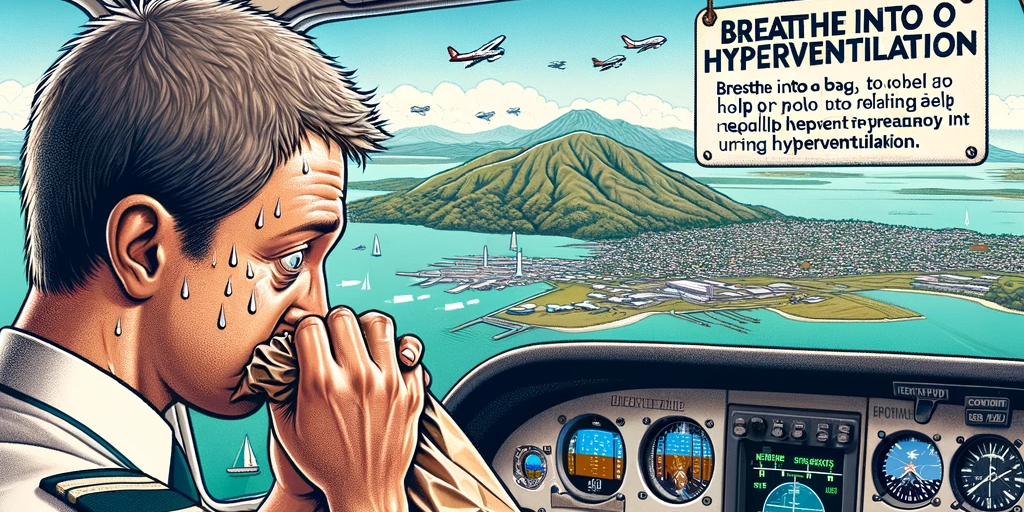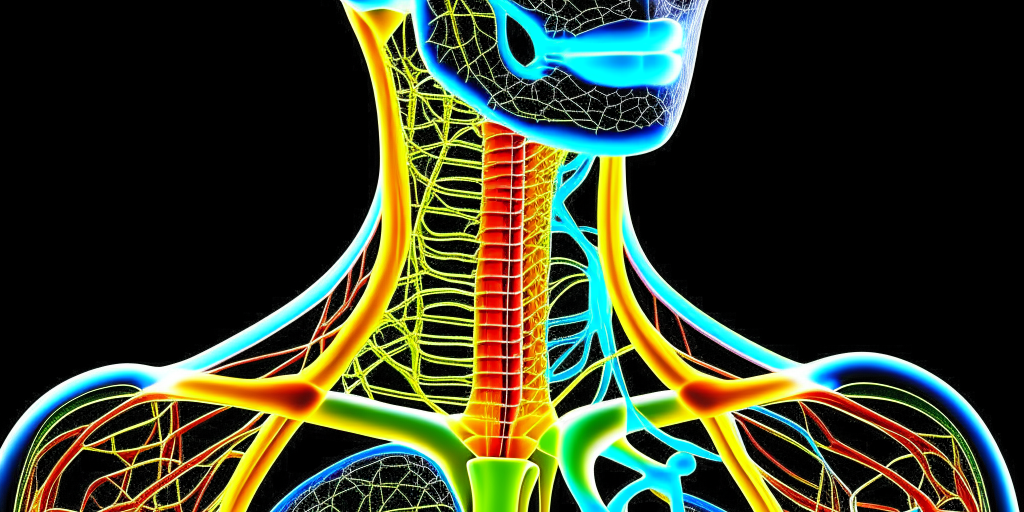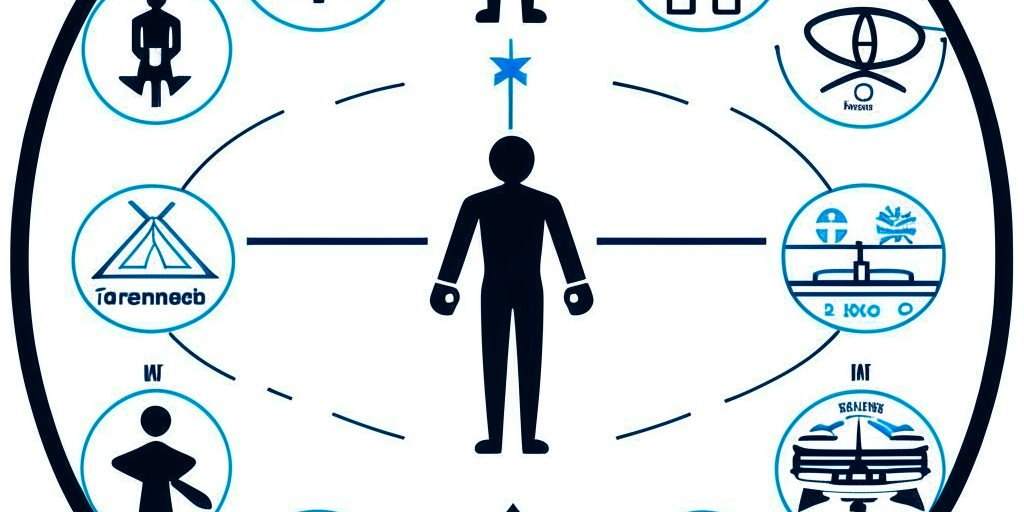| Aircraft Technical Knowledge Study Tracker | – | | Not Viewed | |
| * * * Definitions, Terminology, Units and Abbreviations * * * | – | | Not Viewed | |
| 12.2.2 State the International System (SI) and ICAO units used to express: | – | | Not Viewed | |
| 12.2.4 Define and where appropriate show the relevant relationships between: | – | | Not Viewed | |
| Force – Work – Power | – | | Not Viewed | |
| Centripetal Force Explained | – | | 768 days | |
| More Mass and Weight Examples | – | | Not Viewed | |
| Section 12.2 – Flash Cards | – | | Not Viewed | |
| * * * The Atmosphere * * * | – | | Not Viewed | |
| 12.4 The Atmosphere | – | | Not Viewed | |
| 12.4.6 Explain how air density varies with altitude within the atmosphere. | – | | Not Viewed | |
| 12.4.8 State the relationship between pressure/temperature and the density of an air mass. | – | | Not Viewed | |
| 12.4.10 Describe how pressure, temperature and density normally vary within the atmosphere. | – | | Not Viewed | |
| 12.4.12 Explain the basis for the International Standard Atmosphere (ISA).Sub Topic Syllabus Item | – | | Not Viewed | |
| 12.4.14 State the ISA sea level pressure and temperature conditions. | – | | 770 days | |
| 12.4.16 State the approximate temperature lapse rate up to the tropopause. | – | | Not Viewed | |
| Section 12.4 – Flash Cards | – | | 768 days | |
| * * * Basic Aerodynamic Theory * * * | – | | Not Viewed | |
| Introduction Section 12.6 | – | | Not Viewed | |
| 12.6.2 Describe what an aerofoil is and distinguish between different aerofoil designs. | – | | Not Viewed | |
| 12.6.4 Define (Aerofoil) | – | | Not Viewed | |
| 12.6.4(c) chord; | – | | 769 days | |
| 12.6.4(d) chord line; | – | | 768 days | |
| 12.6.4(b) trailing edge; | – | | Not Viewed | |
| 12.6.4 (e) thickness; | – | | Not Viewed | |
| 12.6.4(f) camber. | – | | 769 days | |
| Useful Velocity Vectors | – | | Not Viewed | |
| Inertia – Momentum | – | | Not Viewed | |
| 12.6.6 Define relative airflow and angle of attack. | – | | Not Viewed | |
| 12.6.8 Explain Bernoullis Theorem in simple terms. | – | | Not Viewed | |
| 12.6.10 Describe streamline airflow around an aerofoil. | – | | Not Viewed | |
| 12.6.12 Explain the changes which occur to dynamic and static pressure wherever the speed of the airflow is: | – | | Not Viewed | |
| 12.6.12(a) increased; | – | | Not Viewed | |
| 12.6.12(b) decreased. | – | | 769 days | |
| 12.6.14 With the aid of diagrams, explain: | – | | Not Viewed | |
| 12.6.14(a) venturi effect; | – | | Not Viewed | |
| 12.6.14(b) the pressure distribution around an aerofoil which is producing lift. | – | | Not Viewed | |
| 12.6.16 Define the terms: | – | | Not Viewed | |
| 12.6.16(a) total reaction (TR); | – | | Not Viewed | |
| 12.6.16(b) centre of pressure (CP). | – | | 767 days | |
| 12.6.18 Describe how TR and CP change with increasing angle of attack for a lifting aerofoil. | – | | Not Viewed | |
| Air Density. | – | | 767 days | |
| 12.6.20 Show how movement of the CP varies between symmetrical and non-symmetrical aerofoils. | – | | Not Viewed | |
| 12.6.22 Define the Lift and Drag components of Total Reaction. | – | | Not Viewed | |
| What is the International Standard Atmosphere (ISA). | – | | Not Viewed | |
| 12.6.24(a) State the lift formula; | – | | Not Viewed | |
| 12.6.24 With respect to lift: | – | | Not Viewed | |
| 12.6.24(b) summarise the factors affecting lift. (i.e. angle of attack, aerofoil shape, IAS) | – | | Not Viewed | |
| 12.6.26 Identify the primary factors determining the coefficient of lift (CL) for an aerofoil. | – | | Not Viewed | |
| 12.6.28 Describe a typical CL versus angle of attack curve (graph). | – | | Not Viewed | |
| 12.6.30 On a typical CL versus angle of attack curve, identify the critical stalling angle. | – | | Not Viewed | |
| 12.6.32 State the precaution against flying with ice, frost, snow or other contamination of the aerofoil surfaces. | – | | 771 days | |
| 12.6.34 Distinguish between induced drag, parasite and profile drag. | – | | 770 days | |
| 12.6.36 List the elements of profile drag. | – | | Not Viewed | |
| 12.6.38 State the factors affecting parasite drag, and profile (form and skin friction) drag. | – | | 768 days | |
| 12.6.40 Explain how induced drag varies depending on: | – | | Not Viewed | |
| 12.6.40(a) angle of attack of the aerofoil; | – | | 770 days | |
| 12.6.40(b) aspect ratio. | – | | 768 days | |
| 12.6.42 Identify curves of parasite, profile, induced and total drag versus aerofoil airspeed. | – | | Not Viewed | |
| 12.6.44 Describe a typical curve of lift/drag (L/D) ratio versus angle of attack for an asymmetrical aerofoil. | – | | Not Viewed | |
| 12.6.46 Identify the approximate angle for best L/D ratio. | – | | Not Viewed | |
| * * * Engines – General Piston Engines * * * | – | | Not Viewed | |
| 12.10.4(a) cylinders; | – | | Not Viewed | |
| 12.10.2 Identify typical cylinder configurations used for aircraft piston engines. | – | | 769 days | |
| 12.10.4 Explain the function of the main components of a four-stroke cycle piston engine including: | – | | 771 days | |
| 12.10.4(b) cylinder heads; | – | | Not Viewed | |
| 12.10.4(c) pistons; | – | | Not Viewed | |
| 12.10.4(d) connecting rods; | – | | Not Viewed | |
| 12.10.4(e) crankshaft; | – | | Not Viewed | |
| 12.10.4(f) valves; | – | | Not Viewed | |
| 12.10.4(g) valve operating mechanism; | – | | Not Viewed | |
| 12.10.4(h) camshaft; | – | | 770 days | |
| 12.10.4(i) spark plugs; | – | | 771 days | |
| 12.10.4(j) injectors. | – | | Not Viewed | |
| 12.10.6 Explain the basic principle of operation of a four-stroke internal combustion engine. | – | | Not Viewed | |
| 12.10.6 Explain the basic principle of operation of a four stroke internal combustionengine. | – | | Not Viewed | |
| 12.10.8 Describe the correlation between engine rpm and power output. | – | | Not Viewed | |
| 12.10.10 Explain the need for valve timing (i.e. valve lead, lag and overlap). | – | | 768 days | |
| 12.10.12 Explain the basic differences between compression ignition (diesel) engines and conventional ignition engines. | – | | Not Viewed | |
| * * * Carburation * * * | – | | Not Viewed | |
| 12.12 Carburation | – | | Not Viewed | |
| 12.12.2 Explain the principle of carburation. | – | | 768 days | |
| 12.12.20(c) correct use of carburettor heat for de-icing, and as an anti-icing measure | – | | Not Viewed | |
| 12.12.4 Explain the basic principle of operation of a simple float-type carburettor. | – | | 770 days | |
| 12.12.6 State the function and/or purpose of the following within the carburettor: | – | | 770 days | |
| 12.12.6(a) atomisation and diffusion; | – | | Not Viewed | |
| 12.12.6(b) idling circuit; | – | | Not Viewed | |
| 12.12.6(c) acceleration enrichment; | – | | Not Viewed | |
| 12.12.6(d) enrichment at high power settings; | – | | Not Viewed | |
| 12.12.6(e) mixture control; | – | | Not Viewed | |
| 12.12.6(f) idle cut-off. | – | | Not Viewed | |
| 12.12.8 Explain the function of a manual mixture control and idle cut-off. | – | | Not Viewed | |
| 12.12.10 Explain the correct operational use of a manual mixture control and idle cut-off. | – | | Not Viewed | |
| 12.12.12 Explain the consequences of operating with: | – | | Not Viewed | |
| 12.12.12(a) over-rich mixture settings; | – | | Not Viewed | |
| 12.12.12(b) over-lean mixture settings. | – | | 769 days | |
| 12.12.20 Describe the: | – | | 768 days | |
| 12.12.20(a) atmospheric and throttle setting conditions conducive to the formation of carburettor ice; | – | | Not Viewed | |
| 12.12.20(b) symptoms of carburettor ice formation; | – | | Not Viewed | |
| 12.12.20(i.e. Remove this ref | – | | Not Viewed | |
| 12.12.22 Describe the function of the inlet manifold. | – | | 771 days | |
| 12.12.14 Describe the abnormal combustion conditions of detonation and pre-ignition, and distinguish between them. | – | | Not Viewed | |
| 12.12.16 Explain the causes and likely effects of detonation and pre-ignition and the measures which can be taken to avoid them. | – | | 771 days | |
| 12.12.18 Explain the formation of refrigeration, throttle and impact ice in a carburettor andintake system. | – | | Not Viewed | |
| * * * Fuel Injection * * * | – | | Not Viewed | |
| 12.14 Fuel Injection | – | | Not Viewed | |
| 12.14.2 State the advantages/disadvantages of fuel injection versus carburetor systems. | – | | Not Viewed | |
| 12.14.4 Explain the: | – | | Not Viewed | |
| 12.14.4(b) difference between direct and indirect injection. Sub Topic Syllabus Item | – | | Not Viewed | |
| 12.14.4(a) function and principles of a fuel injection system; | – | | Not Viewed | |
| 12.14.6 Explain the operating principle of a simple fuel injection system. | – | | Not Viewed | |
| 12.14.8 State the purpose of the following components in a basic fuel injection system: | – | | Not Viewed | |
| 12.14.8(a) fuel delivery pump system; | – | | Not Viewed | |
| 12.14.8(b) fuel distribution system; | – | | Not Viewed | |
| 12.14.8(c) fuel injectors. | – | | Not Viewed | |
| * * * Fuel * * * | – | | Not Viewed | |
| 12.16 Fuel | – | | Not Viewed | |
| 12.16.2 State the common types of fuels and their colour identification. | – | | Not Viewed | |
| 12.16.6 State the precautions regarding the use of MOGAS in aero-engines. | – | | Not Viewed | |
| 12.16.8 State the common fuel contaminants and the precautions which can be taken to avoid them. | – | | Not Viewed | |
| 12.16.4 Distinguish between the different characteristics of AVGAS, MOGAS andAVTUR (Jet A1). | – | | Not Viewed | |
| * * * Exhaust System * * * | – | | Not Viewed | |
| 12.18 Exhaust System | – | | 770 days | |
| 12.18.2 Describe the function of the exhaust manifold. | – | | 768 days | |
| 12.18.4 Explain the importance of proper sealing of the exhaust manifold. | – | | Not Viewed | |
| 12.18.6 Describe the possible sources, indications and associated danger of carbon monoxide gas. | – | | Not Viewed | |
| * * *Ignition Systems – Magneto Ignition * * * | – | | Not Viewed | |
| 12.20 Ignition Systems Magneto Ignition | – | | Not Viewed | |
| 12.20.2 Describe the principal features of a typical magneto ignition system (dual,independent, engine-driven magneto systems with two spark plugs per cylinder). | – | | Not Viewed | |
| 12.20.4 State the purpose and principle of an impulse coupling. | – | | Not Viewed | |
| 12.20.6(including the starter warning light). | – | | Not Viewed | |
| 12.20.6 Describe the operation and correct handling of typical ignition/starter switches | – | | Not Viewed | |
| 12.20.8 Explain the purpose and the typical procedure for conducting magneto checks. | – | | Not Viewed | |
| 12.20.10 Describe the procedures and the precautions to be taken when hand-swinging apropeller to start an engine. | – | | 770 days | |
| * * * Ignition systems – Solid State * * * | – | | Not Viewed | |
| 12.22 Ignition systems Solid State | – | | Not Viewed | |
| 12.22.2 Describe the principal features and components of a typical solid state ignitionsystem. | – | | Not Viewed | |
| 12.22.4 Explain the advantages/disadvantages of solid state ignition systems. | – | | Not Viewed | |
| * * * Engine Management – Piston * * * | – | | Not Viewed | |
| 12.24 Engine Management – Piston | – | | Not Viewed | |
| 12.24.4 In general terms, explain the procedures for: | – | | Not Viewed | |
| 12.24.4(a) staring the engine in cold temperatures; | – | | Not Viewed | |
| 12.24.4(b) starting an over-primed engine; | – | | 770 days | |
| 12.22.6 Explain the purpose and a typical procedure for conducting ignition integrity checks. | – | | Not Viewed | |
| 12.22.8 Describe the operation and correct handling of ignition/starter switch systems.Sub Topic Syllabus Item | – | | 771 days | |
| 12.24.2 State the safety precautions to be taken before starting the engine. | – | | Not Viewed | |
| 12.24.4(c) starting a hot engine; | – | | Not Viewed | |
| 12.24.4(d) controlling an engine fire on start-up; | – | | Not Viewed | |
| 12.24.4(e) checking oil pressure after start; | – | | 770 days | |
| 12.24.4(f) stopping the engine. | – | | 768 days | |
| 12.24.6 Explain the reasons for avoidance of rapid power changes. | – | | Not Viewed | |
| 12.24.8 Explain the need for monitoring and cross-checking engine instrument indications. | – | | Not Viewed | |
| 12.24.10 State the possible causes for rough running or excessive engine vibration. | – | | 767 days | |
| 12.24.14 State the possible causes of a sudden engine failure in flight, and the remedies which may be available to a pilot during subsequent trouble checks. | – | | Not Viewed | |
| 12.24.12 State the actions that the pilot may take to identify and rectify rough running or excessive engine vibration. | – | | Not Viewed | |
| * * * Electrical System – DC * * * | – | | Not Viewed | |
| 12.26 Electrical System – DC | – | | 770 days | |
| 12.26.4 Explain the function of the following components in a typical light aircraft electrical system: | – | | Not Viewed | |
| 12.26.4(a) battery; | – | | Not Viewed | |
| 12.26.2 Describe the types of systems which are typically electrically operated in a light aircraft. | – | | Not Viewed | |
| 12.26.4(b) alternator and generator; | – | | Not Viewed | |
| 12.26.4(c) bus bar; | – | | Not Viewed | |
| 12.26.4(d) voltage regulator, voltmeter, or over voltage light; | – | | Not Viewed | |
| 12.26.4(e) ammeter; | – | | Not Viewed | |
| 12.26.4(f) master switch and battery/alternator switches; | – | | Not Viewed | |
| 12.26.4(g) fuses and circuit breakers. | – | | Not Viewed | |
| 12.26.6 Explain the precautions to take during normal operation of the electrical system,including: | – | | 768 days | |
| 12.26.6(a) avoiding continuous operation of high-power systems on the ground before start; | – | | Not Viewed | |
| 12.26.6(b) starting with radios and other unnecessary equipment switched off; | – | | 770 days | |
| 12.26.6(c) avoiding prolonged operation of the starter motor; | – | | Not Viewed | |
| 12.26.6(d) releasing the starter once the engine is running; | – | | Not Viewed | |
| 12.26.6(e) checking satisfactory operation of the system after start, and monitoring during flight; | – | | Not Viewed | |
| 12.26.6(f) switching off ancillary equipment before shut-down; | – | | 767 days | |
| 12.26.6(g) switching the battery master switch off before leaving the aircraft. | – | | 770 days | |
| 12.26.8 Identify the cockpit indications of the following electrical system malfunctions: | – | | Not Viewed | |
| 12.26.8(c) blown fuse or popped circuit breaker. | – | | 770 days | |
| 12.26.8(a) excessive alternator/generator charge rate; | – | | 772 days | |
| 12.26.8(b) lack of alternator/generator charge; | – | | Not Viewed | |
| 12.26.10 State the actions available to the pilot to deal with: | – | | Not Viewed | |
| 12.26.10(a) excessive alternator/generator charge rate; | – | | Not Viewed | |
| 12.26.10(b) lack of alternator/generator charge; THIS IS A REPEAT | – | | Not Viewed | |
| 12.26.10(c) blown fuse or popped circuit breaker. | – | | Not Viewed | |
| * * * Fuel System Components * * * | – | | Not Viewed | |
| 12.28 Fuel System Components | – | | Not Viewed | |
| 12.28.2 Describe the function of the following components of a simple fuel system: | – | | Not Viewed | |
| 12.28.2(a) fuel selector valve, supply line, strainer and strainer drain; | – | | Not Viewed | |
| 12.28.2(b) fuel primer, engine-driven pump, auxiliary (boost) pumps. | – | | Not Viewed | |
| 12.28.4 Describe the correct management of the fuel system, including fuel selection and handling of priming and auxiliary pumps. | – | | Not Viewed | |
| * * * Fuel Tanks * * * | – | | Not Viewed | |
| 12.30.2 Describe the function of the following components of a simple fuel system: | – | | Not Viewed | |
| 12.30.2(b) fuel quantity indicators; | – | | Not Viewed | |
| 12.30.8 Explain the importance of aircraft earthing during refuelling. | – | | Not Viewed | |
| 12.30.2(a) fuel tank, sump, drain point, supply line standpipe, vents, overflow drain; | – | | Not Viewed | |
| 12.30.2(c) fuel tank construction and associated limitations. | – | | Not Viewed | |
| 12.30.4 Describe the procedure to be used for a fuel drain check. | – | | 768 days | |
| 12.30.6 State the general rules for fuelling of aircraft, including the special precautions for the use of drum stock, and plastic containers. | – | | Not Viewed | |
| * * * Lubrication Systems – Engines * * * | – | | Not Viewed | |
| 12.32 Lubrication Systems – Engines | – | | 767 days | |
| 12.32.4 Explain the term viscosity. | – | | Not Viewed | |
| 12.32.6 Explain the effect of temperature on the lubricating qualities of oil. | – | | Not Viewed | |
| 12.32.8 Briefly describe the function of the following components of an oil system: | – | | Not Viewed | |
| 12.32.2 State the functions of an engine lubrication system. | – | | Not Viewed | |
| 12.32.8(a) wet sump; | – | | Not Viewed | |
| 12.32.8(b) dry sump, scavenge pump, tank; Sub Topic Syllabus Item | – | | Not Viewed | |
| 12.32.8(c) engine-driven pump, pressure relief valve; | – | | 769 days | |
| 12.32.8(d) oil lines, passages and galleries; | – | | Not Viewed | |
| 12.32.8(e) oil cooler, bypass valves and filters; | – | | Not Viewed | |
| 12.32.8(f) oil pressure and temperature gauges. | – | | Not Viewed | |
| 12.32.10 Explain the importance of: | – | | Not Viewed | |
| 12.32.10(b) checking the correct oil quantity before flight. | – | | Not Viewed | |
| 12.32.10(a) using the correct type and grade of oil for a particular aircraft; | – | | 770 days | |
| 12.32.12 Identify the possible oil system malfunctions indicated by: | – | | Not Viewed | |
| 12.32.12(a) low/zero oil pressure; | – | | Not Viewed | |
| 12.32.12(b) high oil pressure; | – | | Not Viewed | |
| 12.32.12(c) fluctuating oil pressure; | – | | Not Viewed | |
| 12.32.12(d) low oil temperature; | – | | Not Viewed | |
| 12.32.12(e) high oil temperature. | – | | Not Viewed | |
| 12.32.14 State the actions (if any) that the pilot can take to rectify: | – | | Not Viewed | |
| 12.32.14(a) low/zero oil pressure; | – | | Not Viewed | |
| 12.32.14(b) high oil pressure; | – | | Not Viewed | |
| 12.32.14(c) fluctuating oil pressure; | – | | Not Viewed | |
| 12.32.14(d) low oil temperature; | – | | Not Viewed | |
| 12.32.14(e) high oil temperature. | – | | Not Viewed | |
| 12.32.16 Describe the correct oil replenishment procedure for a typical aircraft.Instruments | – | | Not Viewed | |
| * * * Engine Instruments * * * | – | | Not Viewed | |
| 12.34 Engine Instruments | – | | Not Viewed | |
| 12.34.2 Describe the function and principle of operation of the following instruments: | – | | Not Viewed | |
| 12.34.2(a) tachometers (rpm) gauges (centrifugal and drag cup); | – | | Not Viewed | |
| 12.34.2(b) manifold pressure and boost gauges; | – | | Not Viewed | |
| 12.34.2(c) direct reading oil pressure gauges; | – | | Not Viewed | |
| 12.34.2(d) vacuum gauges; | – | | Not Viewed | |
| 12.34.2(e) outside air temperature gauges; | – | | Not Viewed | |
| 12.34.2(f) fuel quantity gauges. | – | | Not Viewed | |
| * * * Pressure Instruments * * * | – | | Not Viewed | |
| 12.36 Pressure Instruments | – | | Not Viewed | |
| 12.36.2 Identify the three basic instruments which rely on air pressure for their operation. | – | | Not Viewed | |
| 12.36.4 Describe static pressure and dynamic pressure, and the main factors which affectthem. | – | | Not Viewed | |
| 12.36.6 Explain the operation of a pitot-static system, including: | – | | Not Viewed | |
| 12.36.6(a) static vent(s); | – | | Not Viewed | |
| 12.36.6(b) pitot tube; Sub Topic Syllabus Item | – | | Not Viewed | |
| 12.36.6(c) combined pitot-static head; | – | | 770 days | |
| 12.36.6(d) drain holes, heating, and pitot cover; | – | | Not Viewed | |
| 12.36.6(e) alternate pressure source. | – | | 771 days | |
| 12.36.8 With respect to the airspeed indicator, describe the: | – | | Not Viewed | |
| 12.36.8(a) basic principle of operation and serviceability checks; | – | | Not Viewed | |
| 12.36.8(b) colour coding, and the meaning of VSO, VS1, VFE, VNO and VNE; | – | | Not Viewed | |
| 12.36.8(c) IAS/TAS/groundspeed relationship; | – | | 770 days | |
| 12.36.8(d) errors affecting the ASI, and how position error correction is applied. | – | | Not Viewed | |
| 12.36.10 With respect to the altimeter, describe the: | – | | 771 days | |
| QNH & QFE Examples | – | | Not Viewed | |
| 12.36.10(a) basic principle of operation and serviceability checks; | – | | Not Viewed | |
| 12.36.10(b) subscale settings and the meaning of QNH and QFE; | – | | Not Viewed | |
| 12.36.10(c) errors affecting the altimeter, including subscale setting error. | – | | Not Viewed | |
| 12.36.12 With respect to the vertical speed indicator, describe the: | – | | Not Viewed | |
| 12.36.12(a) basic principle of operation; | – | | Not Viewed | |
| 12.36.12(b) errors affecting the VSI. | – | | Not Viewed | |
| 12.36.14 Indicate the normal checks for serviceability of the pitot-static system, both preflightand during operation. | – | | Not Viewed | |
| 12.36.16 Identify the cockpit indications of the following pitot-static system malfunctions,and state the actions available to the pilot to deal with the problem: | – | | Not Viewed | |
| 12.36.16(a) blockage of the pitot tube; | – | | 772 days | |
| 12.36.16(b) blockage of the static source. | – | | Not Viewed | |
| * * * Magnetic Instruments * * * | – | | Not Viewed | |
| 12.38 Magnetic Instruments | – | | 768 days | |
| 12.38.4 Briefly: | – | | Not Viewed | |
| 12.38.4(a) describe the construction of a present-day direct-reading compass; | – | | Not Viewed | |
| 12.38.2 Given a sample deviation card, show how to apply corrections. | – | | 770 days | |
| 12.38.4(b) define lubber line; | – | | Not Viewed | |
| 12.38.4(c) the functions of the fluid in the compass bowl. | – | | 772 days | |
| 12.38.6 With respect to magnetic dip: | – | | 769 days | |
| 12.38.6(a) describe what it is; | – | | Not Viewed | |
| 12.38.6(b) state how it is compensated for; | – | | 768 days | |
| 12.38.6(c) define residual dip. | – | | Not Viewed | |
| 12.38.8 State the effects of: | – | | Not Viewed | |
| 12.38.8(b) turning error. | – | | Not Viewed | |
| 12.38.8(a) acceleration error; | – | | Not Viewed | |
| 12.38.10 State the compass pre-flight serviceability checks, and the precautions whencarrying magnetic items in an aircraft. Sub Topic Syllabus Item | – | | Not Viewed | |
| * * * Gyroscopic Instruments * * * | – | | Not Viewed | |
| 12.40 Gyroscopic Instruments | – | | Not Viewed | |
| 12.40.4 State the likely effects of reduced or nil suction in the vacuum system. | – | | Not Viewed | |
| 12.40.2 Outline the basic principle of operation of the vacuum system. | – | | Not Viewed | |
| 12.40.6 Describe the gyroscopic properties of: | – | | 768 days | |
| 12.40.6(a) rigidity; | – | | Not Viewed | |
| 12.40.6(b) precession. | – | | 770 days | |
| 12.40.8 With respect to the turn indicator/coordinator: | – | | 770 days | |
| 12.40.8(a) explain the basic principle of a rate gyroscope; | – | | 772 days | |
| 12.40.8(b) differentiate between the different indications of the turn indicator and turn coordinator; | – | | 768 days | |
| 12.40.8(balance) ball. | – | | Not Viewed | |
| 12.40.8(c) state the function, indication and correct use of the coordination | – | | Not Viewed | |
| 12.40.10 With respect to the attitude indicator (or artificial horizon) explain: | – | | Not Viewed | |
| 12.40.10(a) the basic principle of operation (earth gyroscope); | – | | Not Viewed | |
| 12.40.10(b) how pitch attitude and bank angle are displayed; | – | | Not Viewed | |
| 12.40.10(c) the pilot checks for serviceability. | – | | Not Viewed | |
| 12.40.12 With respect to the heading indicator (or DGI), explain the: | – | | Not Viewed | |
| 12.40.12(a) advantages of a gyroscopic heading indicator (versus a compass); | – | | Not Viewed | |
| 12.40.12(b) need for, and method of synchronising the HI with the compass; | – | | 771 days | |
| 12.40.12(c) pilot checks for serviceability. | – | | Not Viewed | |
| 12.40.14 Briefly explain the errors likely to occur if: | – | | 771 days | |
| 12.40.14(a) the gyro rotor rpm is low; | – | | Not Viewed | |
| 12.40.14(b) there is an indication of a power failure on an electrically-driven gyro. | – | | 769 days | |
| 12.40.16 Describe the indications of toppling. | – | | Not Viewed | |
| * * * GNSS Instruments * * * | – | | Not Viewed | |
| 12.42 GNSS Instruments | – | | Not Viewed | |
| 12.42.2 Describe the basic principles and operation of a GNSS (Global NavigationSatellite System). | – | | 768 days | |
| 12.42.4 Describe the limitations and failure indications of a GNSS system. | – | | Not Viewed | |
| * * * TCAS * * * | – | | Not Viewed | |
| 12.44 TCAS | – | | Not Viewed | |
| 12.44.2 Briefly describe the basic function and operation of TCAS. | – | | Not Viewed | |
| * * * TAWS Systems * * * | – | | Not Viewed | |
| 12.46 TAWS Systems | – | | Not Viewed | |
| 12.46.2 Briefly describe the basic function and operation of TAWS (Terrain Awarenessand Warning System). | – | | Not Viewed | |
| * * * EFIS Instrument Displays * * * | – | | Not Viewed | |
| * * * ELT Systems * * * | – | | Not Viewed | |
| 12.50 ELT Systems | – | | Not Viewed | |
| 12.50.2 Describe the function and operation of an aircraft ELT.Section 2 Aeroplane Technical Knowledge Ancillary Systems | – | | Not Viewed | |
| * * * Cooling Systems * * * | – | | Not Viewed | |
| * * * Landing Gear – Fixed * * * | – | | Not Viewed | |
| 12.54 Landing Gear – Fixed | – | | Not Viewed | |
| 12.54.2 Describe the two common types of undercarriage system (tricycle/tail wheel). | – | | 771 days | |
| 12.54.4 Explain typical steering and braking systems. | – | | 768 days | |
| 12.54.6 Explain the precautions for the use of each type.Aerodynamics | – | | Not Viewed | |
| * * * Aeroplane Aerodynamic Theory * * * | – | | Not Viewed | |
| 12.56 Aeroplane Aerodynamic Theory | – | | Not Viewed | |
| 12.56.2 Show how CL varies with use of flaps and control surfaces. | – | | Not Viewed | |
| * * * Basic Flying Controls * * * | – | | Not Viewed | |
| 12.58 Basic Flying Controls | – | | Not Viewed | |
| 12.58.2 Define the aircraft axes of rotation, pitch, roll and yaw. | – | | Not Viewed | |
| 12.58.4 Name the flying controls used to affect movement about each axis.Sub Topic Syllabus Item | – | | 771 days | |
| 12.58.6 Explain how each flying control operates to achieve control of the: | – | | Not Viewed | |
| 12.58.6(a) pitch attitude; | – | | Not Viewed | |
| 12.58.6(b) bank angle; | – | | Not Viewed | |
| 12.58.6(c) yaw. | – | | Not Viewed | |
| 12.58.8 Explain the cross-coupling (further) effects of control in roll and yaw. | – | | Not Viewed | |
| 12.58.10 Explain the effects of airspeed and power settings on control effectiveness andaircraft attitude. | – | | Not Viewed | |
| 12.58.12 Explain the function of a basic trim control. | – | | Not Viewed | |
| 12.58.14 Explain the requirement for the balancing of controls. | – | | Not Viewed | |
| 12.58.16 Explain the correct method for the use of trim controls. | – | | 768 days | |
| 12.58.18 State the methods used to obtain aerodynamic balance. | – | | Not Viewed | |
| 12.58.20 Explain the requirement for using anti-balance tabs on an all-moving tailplane. | – | | Not Viewed | |
| 12.58.22 Describe the principle of operation of anti-balance tabs. | – | | Not Viewed | |
| 12.58.24 Explain the purpose of wing flaps. | – | | Not Viewed | |
| 12.58.26 Describe the principle of operation of wing flaps. | – | | Not Viewed | |
| * * * Straight and Level Flight * * * | – | | Not Viewed | |
| 12.60 Straight and Level Flight | – | | Not Viewed | |
| 12.60.2 Define the four main forces acting in flight. | – | | Not Viewed | |
| 12.60.4 For level flight describe how the four main forces change as IAS is varied. | – | | Not Viewed | |
| 12.60.6 Describe the pitching moments in flight, and how longitudinal stability isachieved. | – | | Not Viewed | |
| 12.60.8 Given a basic graph of power available (PA) and power required (PR) versus TASin level flight, show the derivation of: | – | | Not Viewed | |
| 12.60.8(a) maximum and minimum level flight speed; | – | | Not Viewed | |
| 12.60.8(b) maximum-range speed; | – | | 769 days | |
| 12.60.8(c) maximum endurance speed. | – | | Not Viewed | |
| 12.60.10 Explain the basic operational considerations which apply to flying an aeroplanefor range, or endurance. | – | | Not Viewed | |
| * * * Climbing Flight * * * | – | | Not Viewed | |
| 12.62 Climbing Flight | – | | Not Viewed | |
| 12.62.2 Using a diagram, show and name the forces acting in a steady climb. | – | | Not Viewed | |
| 12.62.4 Distinguish between: | – | | Not Viewed | |
| 12.62.4(a) maximum angle of climb; | – | | Not Viewed | |
| 12.62.4(b) maximum rate of climb; Sub Topic Syllabus Item | – | | Not Viewed | |
| 12.62.4(c) cruise climb | – | | 772 days | |
| 12.62.6 Define the meaning of Vx (max angle) and Vy (max rate). | – | | Not Viewed | |
| 12.62.8 Using a PA/PR (power available/power required) graph, show the derivation ofmaximum rate of climb speed. | – | | Not Viewed | |
| 12.62.10 Briefly explain the factors which affect climb performance. | – | | 771 days | |
| * * * Descending Flight * * * | – | | Not Viewed | |
| 12.64 Descending Flight | – | | Not Viewed | |
| 12.64.2 Identify and name the forces acting in a glide. | – | | Not Viewed | |
| 12.64.4 Explain how the forces in a glide become modified in a constant speed power ondescent. | – | | Not Viewed | |
| 12.64.6 Explain how the lift/drag ratio determines a constant speed glide angle. | – | | Not Viewed | |
| 12.64.8 Briefly explain the effects of weight, IAS, wind, and flap extension on the glideangle. | – | | Not Viewed | |
| * * *Turning Flight * * * | – | | Not Viewed | |
| 12.66 Turning Flight | – | | 772 days | |
| 12.66.2 Define centripetal force. | – | | Not Viewed | |
| 12.66.4 Explain the components of lift which provide the: | – | | Not Viewed | |
| 12.66.4(a) turning force; | – | | Not Viewed | |
| 12.66.4(b) force required opposing weight. | – | | Not Viewed | |
| 12.66.6 Define load factor g. | – | | Not Viewed | |
| 12.66.8 In a level turn, state the relationship between bank angle and lift, drag, and loadfactor. | – | | 770 days | |
| 12.66.10 State the relationship between the turn radius and rate of turn at a given; | – | | 769 days | |
| 12.66.10(a) airspeed; | – | | Not Viewed | |
| 12.66.10(b) bank angle. | – | | Not Viewed | |
| 12.66.12 Describe a rate 1 turn, and a rule-of-thumb method of calculating the bank anglerequired. | – | | Not Viewed | |
| 12.66.14 Explain the effect of bank on rate of climb in a climbing turn, and the tendency tooverbank. | – | | Not Viewed | |
| 12.66.16 Explain the effect of bank on rate of descent in a descending turn, and thetendency to underbank. | – | | 771 days | |
| * * * Stalling and Spinning * * * | – | | Not Viewed | |
| 12.68 Stalling and Spinning | – | | Not Viewed | |
| 12.68.2 Describe the stalling angle of attack, with reference to: | – | | 771 days | |
| 12.68.2(a) disruption of streamline flow over the upper surface of the aerofoil; | – | | 771 days | |
| 12.68.2(b) reduction of lift and increase of drag. Sub Topic Syllabus Item | – | | Not Viewed | |
| 12.68.4 Describe the symptoms of a developing stall. | – | | 772 days | |
| 12.68.6 Explain how: | – | | Not Viewed | |
| 12.68.6(a) the stall is associated with a particular angle of attack and not a particular airspeed; | – | | Not Viewed | |
| 12.68.6(b) a reduction in angle of attack is critical to recovery. | – | | 771 days | |
| 12.68.8 Explain how the stalling IAS is affected by: | – | | Not Viewed | |
| 12.68.8(a) load factor; | – | | 767 days | |
| 12.68.8(b) aircraft weight; | – | | Not Viewed | |
| 12.68.8(c) altitude; | – | | Not Viewed | |
| 12.68.8(d) power; | – | | Not Viewed | |
| 12.68.8(e) flap extension; | – | | Not Viewed | |
| 12.68.8(f) damage, ice, frost, or other contamination of the wings. | – | | Not Viewed | |
| 12.68.10 Describe the possible consequences of using ailerons near, during and in therecovery from a stall. | – | | Not Viewed | |
| 12.68.12 Define the term autorotation and the conditions leading to it. | – | | Not Viewed | |
| 12.68.14 Define a spin, with reference to: | – | | Not Viewed | |
| 12.68.14(a) stalled condition of flight; | – | | 771 days | |
| 12.68.14(b) simultaneous motion about three axes (rolling, pitching, yawing); | – | | Not Viewed | |
| 12.68.14(c) high rate of descent at low airspeed; | – | | Not Viewed | |
| 12.68.14(d) the difference between a spin and a spiral dive. | – | | Not Viewed | |
| 12.68.16 State what actions can be taken to avoid a spin. | – | | Not Viewed | |
| 12.68.18 Explain the standard recovery action from a developed spin.Structure and Systems | – | | Not Viewed | |
| * * * Airframe Structures * * * | – | | Not Viewed | |
| 12.70 Airframe Structure | – | | 767 days | |
| 12.70.2 Identify and explain the basic function of the major components of a conventionalairframe. | – | | 772 days | |
| 12.70.4 Explain the components and distribution of the load on a wing: | – | | Not Viewed | |
| 12.70.4(a) on the ground; | – | | 770 days | |
| 12.70.4(b) in the air, and state the function of spars and struts in opposing these loads. | – | | Not Viewed | |
| 12.70.6 Describe the precautions required to preserve the structural integrity of thefollowing airframes: | – | | Not Viewed | |
| 12.70.8 Describe the indications of damage or failure of airframes constructed of;Sub Topic Syllabus Item | – | | 768 days | |
| 12.70.6(a) aluminium; | – | | Not Viewed | |
| 12.70.6(b) composite; | – | | Not Viewed | |
| 12.70.6(c) fabric covered. | – | | Not Viewed | |
| 12.70.8(a) aluminium; | – | | Not Viewed | |
| 12.70.8(b) composite; | – | | Not Viewed | |
| 12.70.8(c) fabric covering. | – | | Not Viewed | |
| 12.70.10 Describe the procedure to tie down (or picket) a light aircraft. | – | | Not Viewed | |
| * * * Propellers * * * | – | | Not Viewed | |
| 12.72 Propellers | – | | Not Viewed | |
| 12.72.2 With respect to propeller terminology, define the meaning of the following: | – | | 768 days | |
| 12.72.2(a) blade section; | – | | 770 days | |
| 12.72.2(b) blade angle; | – | | Not Viewed | |
| 12.72.2(c) helix (or pitch) angle; | – | | 767 days | |
| 12.72.2(d) angle of attack. | – | | 768 days | |
| 12.72.4 Explain the reason for blade (or helical) twist. | – | | Not Viewed | |
| 12.72.6 With the aid of a diagram, identify and define the following for a rotating bladesection: | – | | 769 days | |
| 12.72.6(a) direction of rotation; | – | | Not Viewed | |
| 12.72.6(b) relative airflow; | – | | Not Viewed | |
| 12.72.6(c) total reaction, with its components; | – | | Not Viewed | |
| 12.72.6(d) thrust and propeller torque. | – | | Not Viewed | |
| 12.72.8 For a fixed-pitch propeller at a constant throttle setting, explain the relationshipbetween airspeed, angle of attack and rpm. | – | | Not Viewed | |
| 12.72.10 Briefly explain the factors which affect the ability of a fixed-pitch propeller toconvert engine power into useful thrust. | – | | Not Viewed | |
| 12.72.12 Explain the basic principle of operation for a constant-speed propeller, and thenormal procedure for changing power settings with the manifold pressure and pitch controls. | – | | Not Viewed | |
| 12.72.14 State the principal advantage of a constant-speed versus a fixed-pitch propeller. | – | | Not Viewed | |
| 12.72.16 Describe the function and operation of a typical reduction gearbox. | – | | 771 days | |
| * * * Control Systems * * * | – | | Not Viewed | |
| 12.76 Control Systems | – | | Not Viewed | |
| 12.76.2 Explain the common methods of the mechanical operation of the: | – | | Not Viewed | |
| 12.76.2(a) primary flight controls; | – | | Not Viewed | |
| 12.76.2(b) trim tab; | – | | Not Viewed | |
| 12.76.2(c) flap systems. | – | | Not Viewed | |
| 12.76.4 Describe the function of control locks and precautions for removal before flight. | – | | 768 days | |
| 12.76.6 Describe the normal operational use of flaps, including limitations.Performance Sub Topic Syllabus Item | – | | Not Viewed | |
| * * * Performance Factors * * * | – | | Not Viewed | |
| 12.100 Performance Factors | – | | Not Viewed | |
| 12.100.2 Describe the general effects of altitude on aircraft performance. | – | | Not Viewed | |
| 12.100.4 Define pressure altitude. | – | | Not Viewed | |
| 12.100.6 Calculate aerodrome pressure altitude, given aerodrome elevation and prevailingQNH. | – | | Not Viewed | |
| 12.100.8 Explain how to determine pressure altitude by using an altimeter. | – | | 771 days | |
| 12.100.10 Explain the general effect of temperature on performance. | – | | Not Viewed | |
| 12.100.12 Define density altitude. | – | | Not Viewed | |
| 12.100.14 Given a pressure altitude and ambient temperature, calculate the: | – | | 768 days | |
| 12.100.14(a) ISA deviation; | – | | Not Viewed | |
| 12.100.14(b) density altitude. | – | | 769 days | |
| 12.100.16 Explain the effect of the following factors on TODR (Take Off DistanceRequired) and LDR (Landing Distance Required): | – | | Not Viewed | |
| 12.100.16(a) aircraft weight; | – | | Not Viewed | |
| 12.100.16(b) temperature and pressure (i.e. density altitude); | – | | Not Viewed | |
| 12.100.16(c) humidity; | – | | Not Viewed | |
| 12.100.16(d) runway slope; | – | | Not Viewed | |
| 12.100.16(e) runway surface condition; | – | | Not Viewed | |
| 12.100.16(f) headwind/tailwind component; | – | | 768 days | |
| 12.100.16(g) use/misuse of flaps; | – | | Not Viewed | |
| 12.100.16(h) power available; | – | | 771 days | |
| 12.100.16(i) frost or other contaminants/damage of lifting surfaces. | – | | 770 days | |
| 12.100.18 Describe the hazards of windshear in the initial climb-out path, and on theapproach path. | – | | Not Viewed | |
| * * * Take-off Performance * * * | – | | Not Viewed | |
| 12.102 Take-off Performance | – | | Not Viewed | |
| 12.102.4 Explain the difference between take-off distance required (TODR) and take-offdistance available (TODA). | – | | Not Viewed | |
| * * * Landing Performance * * * | – | | Not Viewed | |
| 12.104 Landing Performance | – | | Not Viewed | |
| 12.104.4 Explain the difference between landing distance required (LDR) and landingdistance available (LDA). Weight and Balance | – | | Not Viewed | |
| 12.104.2 Given typical performance data, demonstrate the ability to determine LDR. | – | | Not Viewed | |
| 12.102.2 Given typical performance data, demonstrate the ability to determine TODR | – | | Not Viewed | |
| * * * Definitions, Terminology and Abbreviations * * * | – | | Not Viewed | |
| 12.106 Definitions, Terminology and AbbreviationsSub Topic Syllabus Item | – | | Not Viewed | |
| 12.106.2 Define the following terms: | – | | Not Viewed | |
| 12.106.2(a) arm (moment arm); | – | | Not Viewed | |
| 12.106.2(b) datum; | – | | 771 days | |
| 12.106.2(c) moment (including units used); | – | | 770 days | |
| 12.106.2(d) centre of gravity (C of G); | – | | Not Viewed | |
| 12.106.2(e) longitudinal C of G range and associated limits; | – | | Not Viewed | |
| 12.106.2(f) station; | – | | Not Viewed | |
| 12.106.2(g) basic aircraft empty weight (standard empty weight); | – | | Not Viewed | |
| 12.106.2(h) zero fuel weight (ZFW); | – | | 772 days | |
| 12.106.2(i) gross weight (AUW); | – | | Not Viewed | |
| 12.106.2(j) maximum certified take-off weight (MCTOW). | – | | Not Viewed | |
| * * * Weight and Loading * * * | – | | Not Viewed | |
| 12.108 Weight and Loading | – | | Not Viewed | |
| 12.108.2 Given a basic aircraft load sheet/data, demonstrate the ability to: | – | | 771 days | |
| 12.108.2(a) calculate the C of G position; | – | | Not Viewed | |
| 12.108.2(b) use a typical loading graph to determine C of G position; | – | | Not Viewed | |
| 12.108.2(c) use index units. | – | | Not Viewed | |
| * * * Centre of Gravity (C of G) * * * | – | | Not Viewed | |
| 12.110 Centre of Gravity (C of G) | – | | Not Viewed | |
| 12.110.2 State the reasons for operating an aircraft within the C of G limits. | – | | Not Viewed | |
| 12.110.4 State the effect on the stability and control of an aircraft if flown with the C of Gat the: | – | | Not Viewed | |
| 12.110.4(b) aft limit. | – | | Not Viewed | |
| 12.110.4(a) forward limit; | – | | 768 days | |








